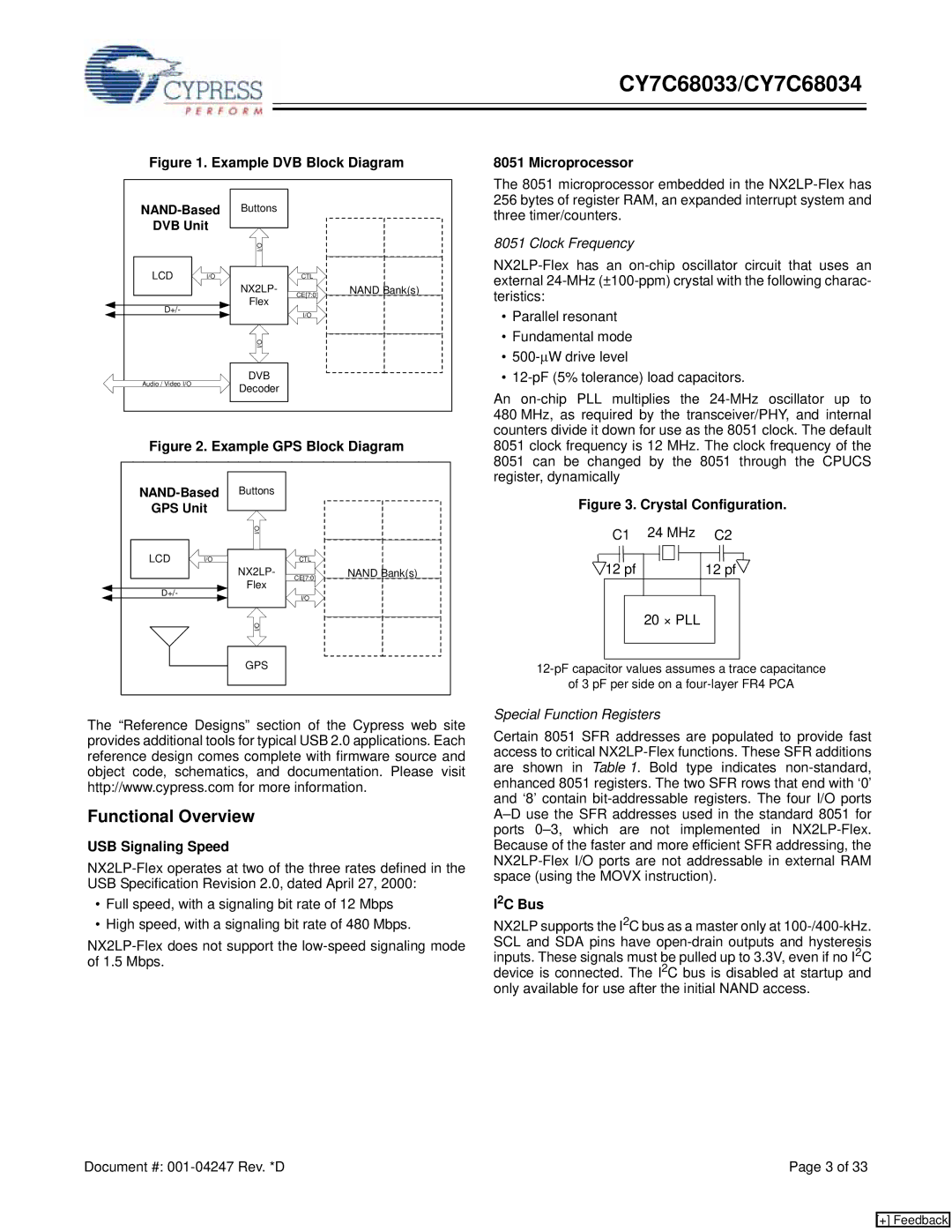
CY7C68033/CY7C68034
Figure 1. Example DVB Block Diagram
8051 Microprocessor
DVB Unit
LCD | I/O |
D+/-
Audio / Video I/O
Buttons
I/O
NX2LP-
Flex
I/O
DVB
Decoder
CTL |
|
CE[7:0] | NAND Bank(s) |
I/O |
|
The 8051 microprocessor embedded in the
8051 Clock Frequency
•Parallel resonant
•Fundamental mode
•
•
An
Figure 2. Example GPS Block Diagram
8051 clock frequency is 12 MHz. The clock frequency of the 8051 can be changed by the 8051 through the CPUCS register, dynamically
GPS Unit
LCD | I/O |
D+/-
Buttons
I/O
NX2LP-
Flex
I/O
GPS
CTL |
|
CE[7:0] | NAND Bank(s) |
I/O |
|
Figure 3. Crystal Configuration.
C1 24 MHz C2
|
|
|
|
|
|
|
|
|
|
|
|
| 12 |
| pf |
|
|
| 12 |
| pf |
| |
|
|
|
|
|
|
| |||||
|
|
|
|
|
|
|
|
|
|
|
|
20 × PLL
of 3 pF per side on a
The “Reference Designs” section of the Cypress web site provides additional tools for typical USB 2.0 applications. Each reference design comes complete with firmware source and object code, schematics, and documentation. Please visit http://www.cypress.com for more information.
Functional Overview
USB Signaling Speed
•Full speed, with a signaling bit rate of 12 Mbps
•High speed, with a signaling bit rate of 480 Mbps.
Document #:
Special Function Registers
Certain 8051 SFR addresses are populated to provide fast access to critical
I2C Bus
NX2LP supports the I2C bus as a master only at
Page 3 of 33
[+] Feedback
